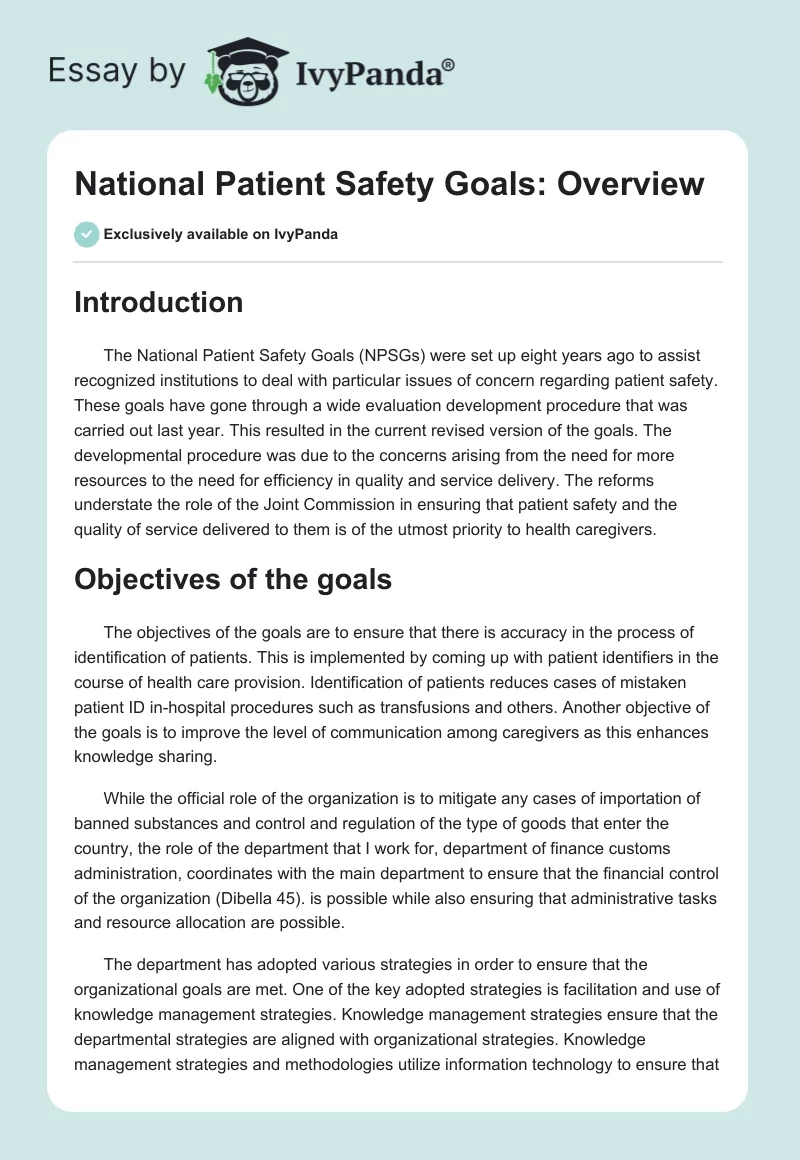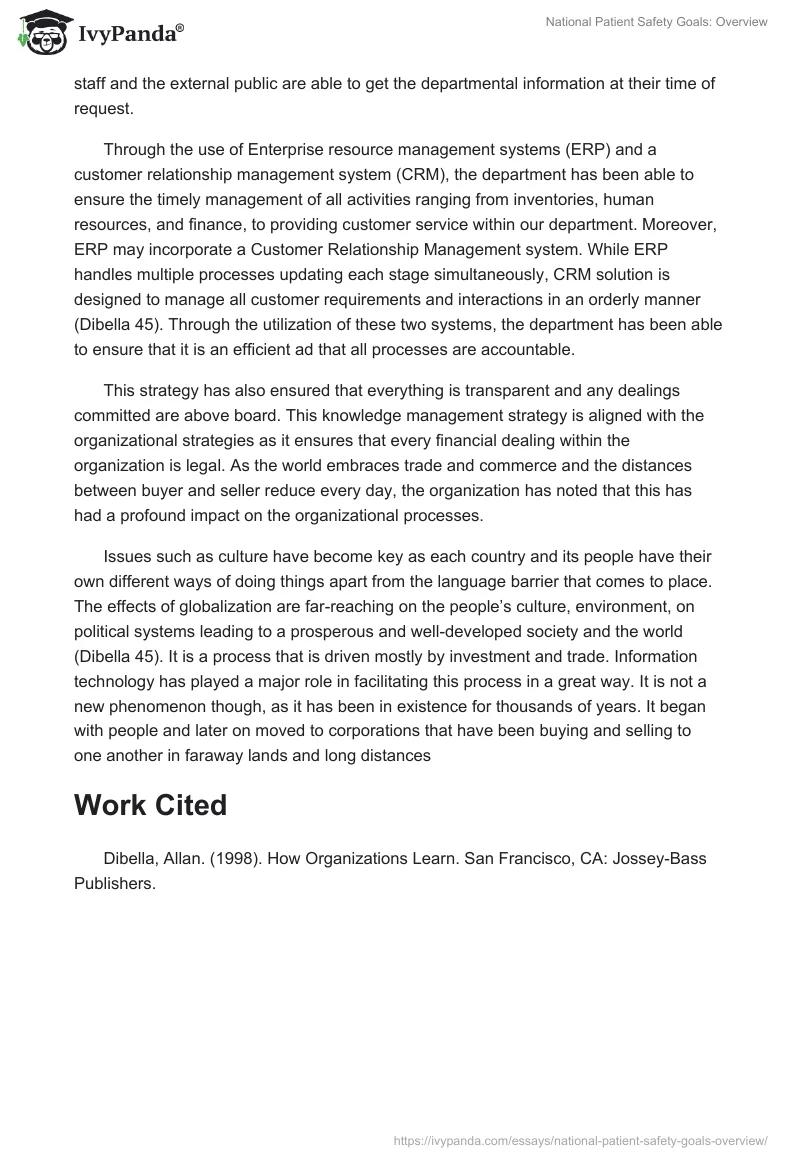Introduction
The National Patient Safety Goals (NPSGs) were set up eight years ago to assist recognized institutions to deal with particular issues of concern regarding patient safety. These goals have gone through a wide evaluation development procedure that was carried out last year. This resulted in the current revised version of the goals. The developmental procedure was due to the concerns arising from the need for more resources to the need for efficiency in quality and service delivery. The reforms understate the role of the Joint Commission in ensuring that patient safety and the quality of service delivered to them is of the utmost priority to health caregivers.
Objectives of the goals
The objectives of the goals are to ensure that there is accuracy in the process of identification of patients. This is implemented by coming up with patient identifiers in the course of health care provision. Identification of patients reduces cases of mistaken patient ID in-hospital procedures such as transfusions and others. Another objective of the goals is to improve the level of communication among caregivers as this enhances knowledge sharing.
While the official role of the organization is to mitigate any cases of importation of banned substances and control and regulation of the type of goods that enter the country, the role of the department that I work for, department of finance customs administration, coordinates with the main department to ensure that the financial control of the organization (Dibella 45). is possible while also ensuring that administrative tasks and resource allocation are possible.
The department has adopted various strategies in order to ensure that the organizational goals are met. One of the key adopted strategies is facilitation and use of knowledge management strategies. Knowledge management strategies ensure that the departmental strategies are aligned with organizational strategies. Knowledge management strategies and methodologies utilize information technology to ensure that staff and the external public are able to get the departmental information at their time of request.
Through the use of Enterprise resource management systems (ERP) and a customer relationship management system (CRM), the department has been able to ensure the timely management of all activities ranging from inventories, human resources, and finance, to providing customer service within our department. Moreover, ERP may incorporate a Customer Relationship Management system. While ERP handles multiple processes updating each stage simultaneously, CRM solution is designed to manage all customer requirements and interactions in an orderly manner (Dibella 45). Through the utilization of these two systems, the department has been able to ensure that it is an efficient ad that all processes are accountable.
This strategy has also ensured that everything is transparent and any dealings committed are above board. This knowledge management strategy is aligned with the organizational strategies as it ensures that every financial dealing within the organization is legal. As the world embraces trade and commerce and the distances between buyer and seller reduce every day, the organization has noted that this has had a profound impact on the organizational processes.
Issues such as culture have become key as each country and its people have their own different ways of doing things apart from the language barrier that comes to place. The effects of globalization are far-reaching on the people’s culture, environment, on political systems leading to a prosperous and well-developed society and the world (Dibella 45). It is a process that is driven mostly by investment and trade. Information technology has played a major role in facilitating this process in a great way. It is not a new phenomenon though, as it has been in existence for thousands of years. It began with people and later on moved to corporations that have been buying and selling to one another in faraway lands and long distances
Work Cited
Dibella, Allan. (1998). How Organizations Learn. San Francisco, CA: Jossey-Bass Publishers.


